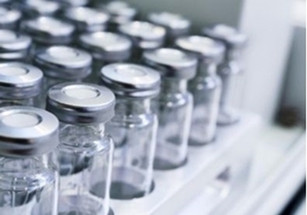Posted by Chrom Tech on 17th Nov 2025
Vials vs. 96-Well Plates for Chromatography
96-well plates and vials are both essential consumables in modern chromatography workflows. While vials have long been the industry standard, advances in automation and sample handling have made 96-well plates increasingly popular. Both serve vital roles in analytical and preparative processes, and the right choice depends on your application, throughput needs, and instrumentation setup.
Vials in Chromatography
Despite the growth of high-throughput technologies, vials remain indispensable in chromatography laboratories. These single-use containers—available in both glass and plastic—are used across numerous analytical techniques. Vials come with a variety of closure options, including screw caps, snap caps, and crimp caps, allowing users to match the seal type to their application.
Vials are the preferred format for gas chromatography (GC) because they provide an airtight seal that minimizes sample evaporation. Crimp caps, in particular, offer an exceptionally secure seal, making them ideal for volatile analytes. Additionally, vials are often required in workflows that demand strict chain-of-custody compliance, such as forensic drug testing or regulated pharmaceutical environments, where sample integrity and traceability are critical.
96-Well Plates for Chromatography
96-well plates have become increasingly common with the evolution of automation and high-throughput analytical instruments. Each plate contains 96 individual cavities (or wells), allowing for simultaneous processing of multiple samples. This design provides major efficiency advantages for liquid chromatography (LC) applications, where analytes are less volatile and sample loss through evaporation is minimal.
In workflows requiring controlled evaporation—such as sample concentration or solvent exchange—specialized well plate instrumentation can accelerate the process and reduce variability. Moreover, the use of 96-well plates supports automated sample handling, minimizing human error and enabling laboratories to process significantly more samples per run.
These benefits make well plates a cost-effective and time-saving solution, particularly for high-throughput LC/MS laboratories where consistent performance and reproducibility are paramount.
Vials vs. 96-Well Plates: Which Is Right for Your Lab?
In the discussion of vials vs. 96-well plates for chromatography, each format offers unique advantages depending on the analytical method and workflow requirements:
- Vials are ideal for gas chromatography and applications requiring airtight seals or strict sample custody.
- 96-well plates excel in high-throughput liquid chromatography and automated systems where efficiency and precision are key.
Ultimately, many labs utilize both formats—vials for volatile, low-volume, or regulated samples, and well plates for larger screening studies or automated analytical systems. For help determining the best consumables for your workflow, contact Chrom Tech for expert guidance on chromatography supplies and system compatibility.
Looking for More 96-Well Plate Options?
View the complete lineup of polypropylene, deep-well, glass-insert, and specialty plate formats.
Explore All 96-Well PlatesFrequently Asked Questions About Vials and 96-Well Plates
Are vials still commonly used in chromatography?
Yes. Vials remain essential, particularly for gas chromatography and applications requiring secure, airtight seals. Their simplicity and reliability make them a preferred choice for volatile samples and regulated workflows.
Why are 96-well plates popular in liquid chromatography?
96-well plates support high-throughput automation and minimize manual handling. They allow multiple samples to be analyzed simultaneously, reducing time and cost while improving reproducibility.
Can I use both vials and 96-well plates in the same lab?
Absolutely. Many chromatography labs use both formats—vials for GC or trace analysis, and well plates for LC workflows or automated systems—to optimize efficiency across different analytical applications.

